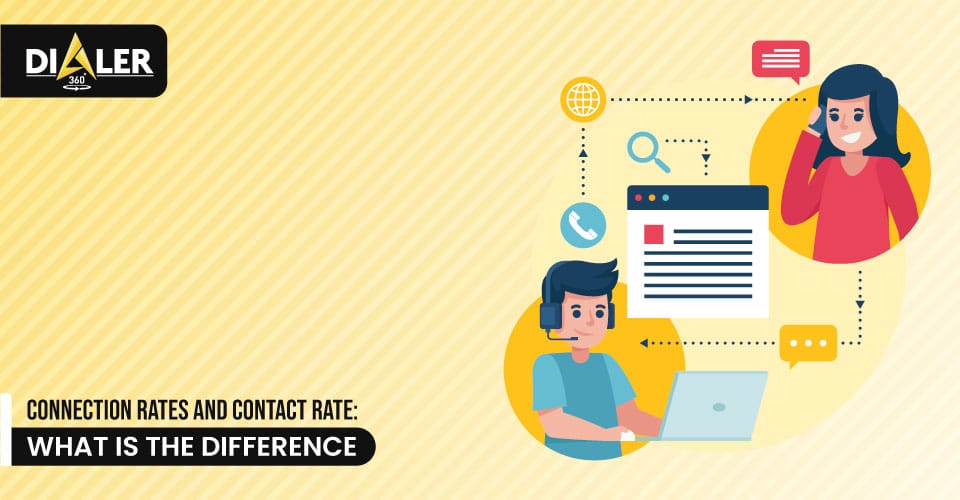As soon as the business expands beyond a certain volume of customers, it needs a contact/call center either inbound or outbound.
Therefore, all businesses, having a large pool of customers, have hired or operating in-house contact centers. But before we talk about how does a call center operates, we must know the definition of contact or call center.
So, What Is A Contact/Call Center?
Call/contact center is a department or an office that handles all queries from existing and new customers with the help of a team of representatives. These representatives offer real-time solutions to customers.
Nowadays, some businesses consider it a necessary evil, yet others are making a profit from the call center as well. So, handling a call/contact center is a matter of keenness and contemplation.
Difference Between A Call Center and A Contact Center
A call center offers only voice services. So, in a typical call center, representatives make or receive calls from customers and listen to their issues. Then, offer them the respective solutions.
However, as soon as the call center starts offering email handling, live chats, and messaging services, it becomes a contact center.
On the other hand, almost all organizations are now handling customer queries over email, live chats, and calls. So, professionals use contact centers and call centers interchangeably.
Knowing the Purposes of a Contact/Call Center
Generally, contact centers are used for the purpose of:
- Market trends researching
- Customer support
- Telemarketing campaigns
- Handling customer queries
What Inbound Call Centers Do?
An inbound call center receives calls from customers usually linked through toll-free numbers. The call center mechanism is integrated with an automatic call distribution (ACD) software.
This software lets the customers pass through the Integrated Voice Recognition (IVR) system where the customer can make a selection of services by pressing assigned numbers to each function.
Meanwhile, the ACD directs the call to a specific agent depending on the customer’s query and agent’s skills and availability. As soon as an agent logs in, the system starts recognizing and assigning calls to that agent.
Additionally, the system assists agents by showing customer details, query type, and expected suggestion on the desktop screen. So, the agent easily provides information and resolve issues conveniently. After handling a call, the agent then waits for the ACD to deliver the next call.
So, How an Outbound Call Center Operates?
Agents in an outbound call center call to the existing or potential customer. They sell products by telemarketing, collect bills, renew subscriptions, take surveys, and schedule appointments.
These calls are originated by certain software: the auto-dialer. The auto-dialer further offers various versions like power dialer, predictive dialer, and progressive dialer, etc.
Such a dialer makes calls and hand-over to the available agent. Then, the agent deals further. Though cold calling is taken as push marketing, yet it is effective and profit-making.
What Technologies Do They Use?
Traditionally, call centers use a desktop, dialing software, ACD, IVR, and headsets. That’s all a call center uses to carry on its regular functions.
However, based on the convenience and operation types, a call center further integrates different tools and assisting supports. For example, a call center can use Customer Relationship Management (CRM) or a Workforce Management tool for better data handling and team management, respectively.
Moreover, call centers use numerous kinds of dialers depending on their needs and suitability. For example, call centers that have to handle a large volume of customers they use predictive dialer.
People Are Asset of a Call Center
People account for more than 70% cost of a call center. They deserve because people have more impact on customers than processes and technology.
However, call center managers do not invest in their training. Even more, having a flat structure, agents do not find progression in their jobs. That’s why the job quitting ratio is more than any other industry.
So, managers should invest in their training and manage the ways to make agents feeling progression in their jobs.
Week’s First Day is the Busiest Day
After spending a busy week, people sort out bills and conflicts on the weekend. Then, they make mind to consult with the customer representatives on the upcoming Monday – the first working day of the week.
That’s why Monday is the busiest day. Moreover, a higher ratio of absenteeism on Monday morning makes the activity more challenging for advisors.
On the other hand, if the call center remains closed on the weekend, the next Monday will be double burdened than normal weekdays.
So, if you are going to launch a call center, keep this fact in mind as well. And if you are a customer, avoid making a call on Monday if you want to avoid waiting for a longer time.
Mangers Hold the Key Role
In a call center, a team leader is the success key of the department. As the call center has a flat structure, hierarchal chaos is more often than any other field.
So, the responsibility of agents’ happiness lies on the shoulders of the manager directly. They have to train them, guide them, and ensure their alertness. That’s why the managers have to be present at the call centers all the time.
VoIP Integrated Call Centers
Voice over internet protocol (VoIP) has revolutionized the environment of call centers. VoIP converts the sound signal directly into digital signals and then transfer to the required location. So, the communication process is far faster than the phone lines.
Also, it has reduced the call charges and even going down as more and more VoIP carriers are coming in the arena.
VoIP has reduced the cost and improved voice quality offer outbound call centers. On the other hand, it offers inbound call centers to enjoy the delivery of pertinent call information over the same data connection.
In Summary
In a nutshell, all businesses from real estate to automobiles and from fast food to medical services need a decent call center. However, they choose either inbound or outbound, depending on their needs.
Call centers are improving with time. They are now integrated with advanced technologies. Still, the manager has a key role in making the customer experience elevated.






